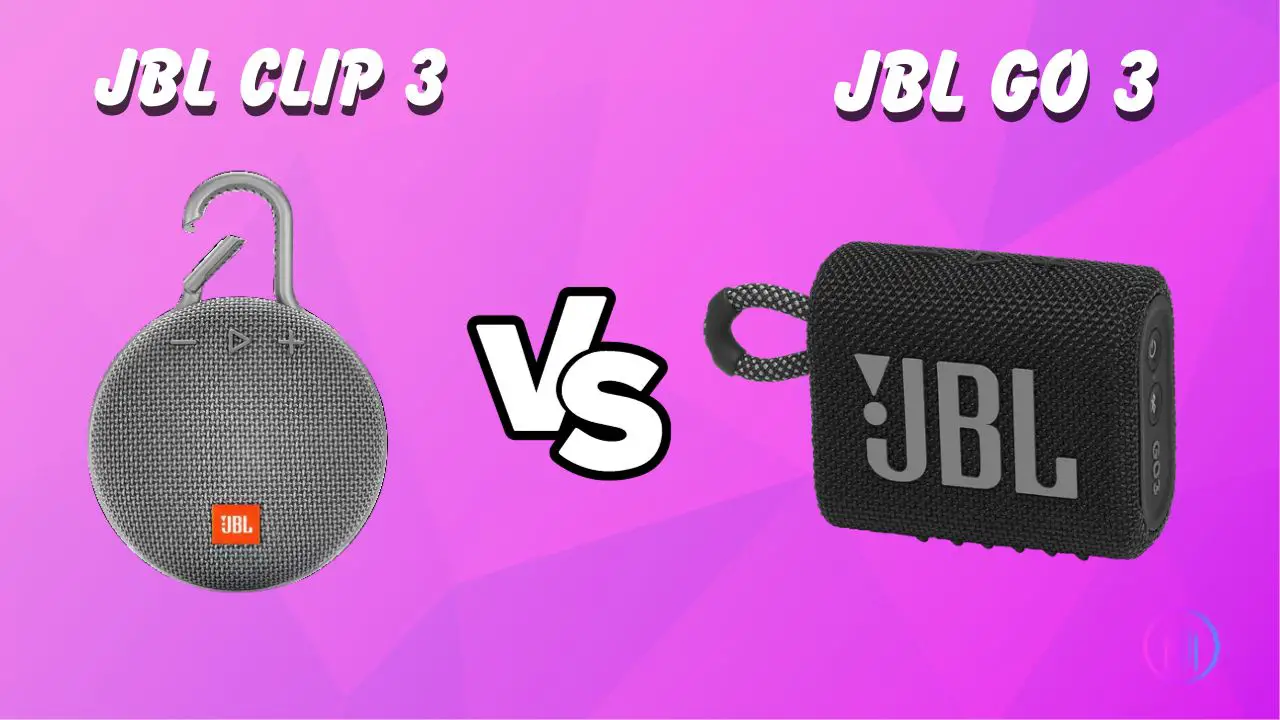Finding the perfect Bluetooth speaker for on-the-go use can be daunting. While JBL Clip 3 and Go 3 have a reputation in the world of portable speakers, you might want to know which is a better choice. Of course, it may not be practical to purchase and carry both.
So, let’s compare the features of each one to find out which is a better choice for you.
Which One’s Better: Clip 3 Vs. Go 3
Design and Dimensions:

First of all, the design and dimensions can greatly influence the final decision. If you want to carry a speaker everywhere, you won’t want to choose something too large, as that would be a hassle to carry.
Both the speakers are quite small and lightweight. With dimensions of 3.8 x 5.4 x 1.8 inches or 9.7 x 13.7 x 4.6 cm, and a weight is 0.21 kgs or 0.46 lbs, the JBL Clip 3 speaker is the epitome of portable speakers. On the other hand, JBL Go 3 has dimensions of
3.4 x 2.7 x 1.6″ / 8.6 x 6.9 x 4.0 cm and weighs slightly less than Clip 3, i.e., 209g.
Both the JBL Clip 3 and Go 3 have rugged, durable exteriors with sleek, modern looks. The JBL Clip 3 has a round shape, whereas the JBL Go 3 has a rectangular shape. The JBL Clip 3 is made of a sturdy, rubberized material that provides grip, protects the speaker from scratches, and enhances its overall durability.
Go 3, on the other hand, has a mesh fabric-covered exterior, protecting the internal sound drivers from scratches and damage. The material is stronger and somewhat similar to metal construction.
Portability:
JBL Clip 3 and Go 3 are highly portable speakers because of their compact size and durable material. In addition, the design of JBL Go 3 incorporates a small handle that allows you to carry the speaker anywhere easily.
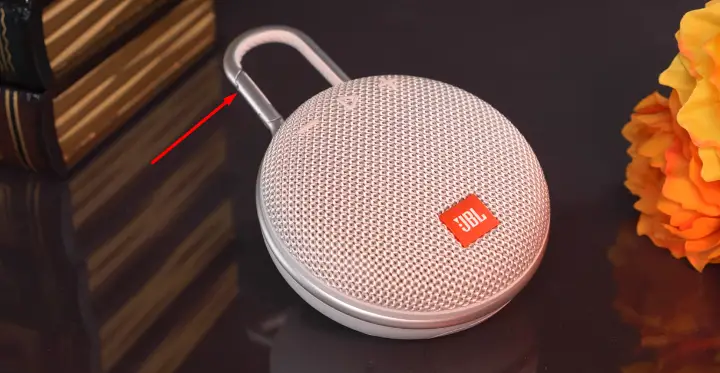
On the other hand, JBL Clip 3 also has an integrated Carabiner, which is more useful compared to the handle of Go 3. With the help of this carabiner, you can easily attach your Clip 3 to a wall hook, your bag, or even your bike handle using this carabiner.
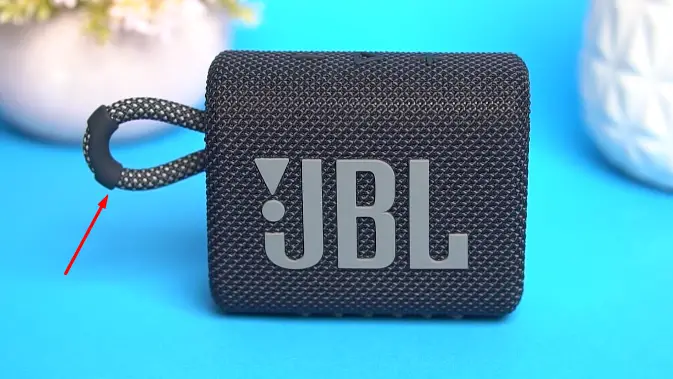
Additionally, both speakers are durable, with a metal grill protecting the sound drivers from scratches and bumpy rides.
Features:

Now, let’s discuss the features that both speakers offer.
First, JBL Clip 3 and Go 3 are water resistant, so you don’t have to worry about the splashes of water damaging your speaker. However, JBL Go 3 takes a step further by being water and dust-resistant. It has an IP67 rating, meaning you can now forget about dust entering the speaker or damaging it.
JBL Clip 3, on the other hand, has an IPX7 rating, indicating that it is water-resistant, but unlike the Go 3, it doesn’t offer dust protection.
A built-in mic for hands-free calling is a great feature to have in your speakers. JBL Clip 3 has a built-in mic that allows the user to attend calls while the phone is connected to the speaker. On the other hand, Go 3 doesn’t have any such feature.
Finally, both speakers have a built-in power bank for charging other devices, a companion app, or a JBL Partyboost feature to daisy chain multiple speakers.
Connectivity:
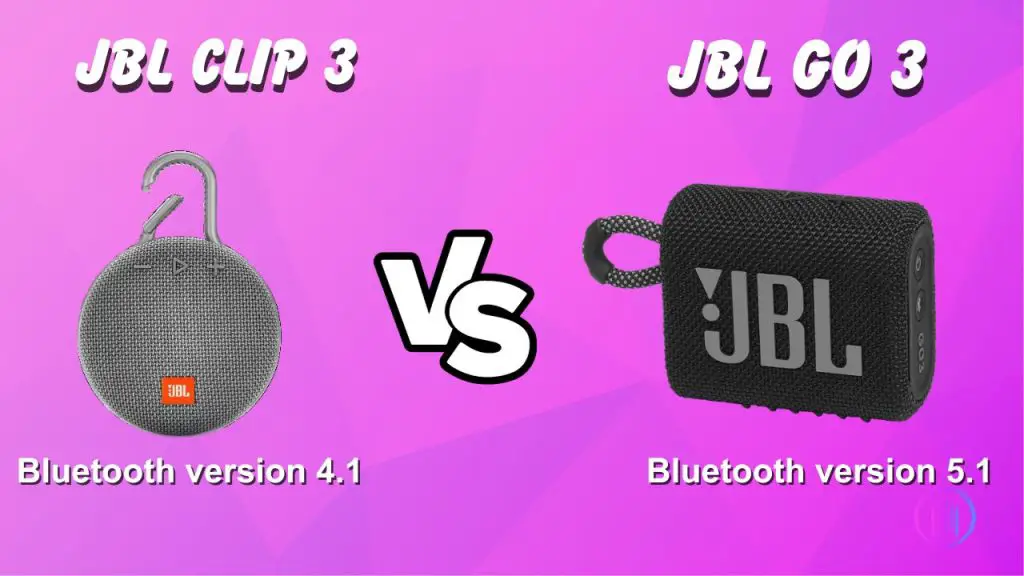
Both speakers support wireless Bluetooth connection, where you can connect devices with the speaker via Bluetooth. JBL Go 3 uses Bluetooth version 5.1, which is better than the JBL Clip 3, which has Bluetooth 4.1. With Bluetooth 5.1, JBL Go 3 has a better connectivity range, stable connection, and faster connectivity and transmission rate.
However, JBL Clip 3 has more connectivity options than its competitor JBL Go 3. If you want to connect a device that doesn’t support Bluetooth connection, you’ll be limited to Go 3. On the contrary, JBL Clip 3 offers an Aux input mode, allowing users to connect devices through an AUX cable.
JBL Go 3 uses USB-port C, whereas, Clip 3 has a Micro-USB port, which is outdated and offers a slower transmission rate compared to a USB-C port.
Audio Quality:
JBL Clip 3 has a power output of 3 watts, whereas Go 3 takes it up to 4.2, making it slightly louder than its competitor.
With a frequency response of 120 HZ to 20 KHz, JBL Clip produces quite an impressive sound output for its size. It delivers clear and balanced audio with a decent amount of bass. The speaker may struggle with or produce muffled audio for tracks with heavy bass. However, the speaker provides a satisfying audio experience for its size, with sound generally projected and focused toward the front.
In comparison, JBL Go 3 has a better audio performance. With a frequency response of 110 HZ t0 20 KHz, this speaker can produce impressive and detailed audio reproduction with well-defined mid-range and treble frequencies. The bass response is still limited because of the smaller size; however, it still delivers a decent low-end presence than JBL Clip 3.
Battery Life:
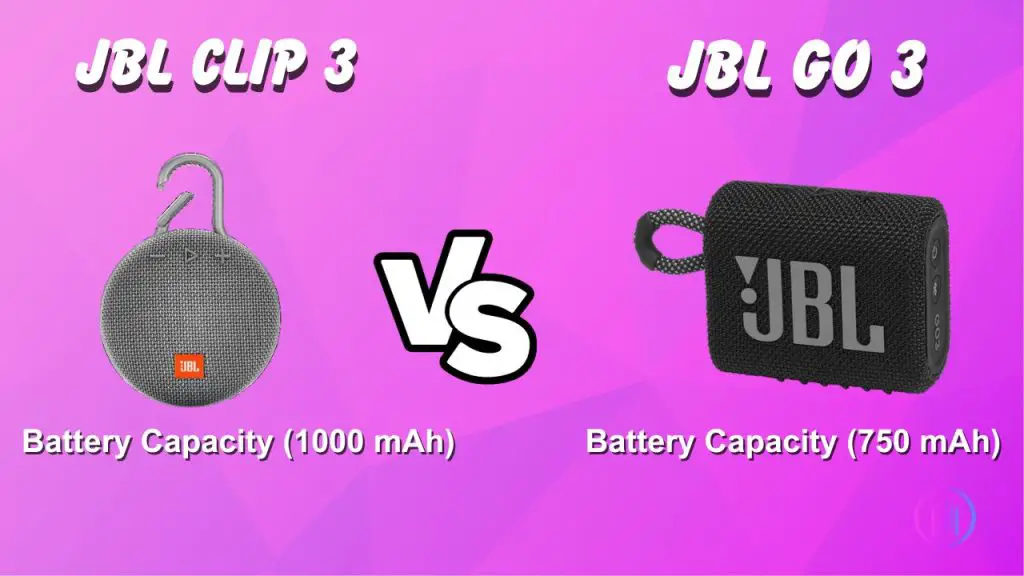
The JBL Go 3 has a battery life of only 5.5 hours with a 2.5-hour charging time, which may be considered significant given the relatively short battery life. So, you may take Go 3 out on a day trip; however, using this speaker wouldn’t be a great idea for longer trips without a charging facility.
On the other hand, JBL Clip 3 has a battery life of 10 hours, with a charging time of three hours. It outperforms its competitor and could last a day or two if used at moderate volume.
The speakers do not have any built-in power bank to charge other devices. In addition, both speakers have a power-saving mode, allowing them to shut down automatically after 10-20 minutes of inactivity.
Price:
It’s important to know the price of each of these speakers to see if they are worth buying and whether they fit your budget. JBL Clip 3 is slightly more expensive than Go 3. It has an average price of $50-$70 USD. On the other hand, the JBL Go 3 is available in the $40-$50 USD price range.
JBL Clip 3 and Go 3 Todays Deal:
Which One You Should Buy?
Now that you have seen all the features and audio performance of each speaker, you might already have made up your mind about which one to purchase.
If you’re willing to compromise on the battery life, the extra connectivity option, and the built-in mic over the sound quality, JBL Go 3 is the best option. If you’re interested in exploring more budget-friendly options, check out our guide on the best budget Bluetooth speakers. It has a better sound quality with a slightly louder audio output and more balanced and focused bass for its size than its competitor. It also features a superior Bluetooth version—Bluetooth 5.1—and has an IP67 rating, making it both dust and water-resistant for outdoor use.
However, if you’re looking for a speaker with better battery life, more connectivity options, a built-in mic, decent audio output, and portability, you can choose Clip 3. Just remember that although it is slightly more expensive, it doesn’t offer the stronger Bluetooth connection, superior audio quality, or dust resistance provided by the Go 3.
| Features | JBL Clip 3 | JBL Go 3 |
|---|---|---|
| Dimensions & Weight | 5.4 x 3.8 x 1.8″ / 210g | 3.8 x 5.4 x x 1.8″ / 209g |
| Design | Round, rugged, rubberized material | Rectangular, mesh fabric-covered exterior |
| Portability | Integrated Carabiner | Small handle |
| Water Resistance | IPX7 (Water resistant) | IP67 (Water and dust resistant) |
| Built-in Mic | Yes | No |
| Connectivity | Bluetooth 4.1, Aux input | Bluetooth 5.1, no Aux input |
| Charging Port | Micro-USB port | USB-C port |
| Power Output | 3 watts | 4.2 watts |
| Frequency Response | 120 HZ to 20 KHz | 110 HZ to 20 KHz |
| Battery Life | 10 hours | 5.5 hours |
| Price Range (USD) | $50-$70 | $40-$50 |
Final Word
Choosing a speaker has much to do with its features and sound quality. However, it’s more about personal preferences regarding audio and usability. You may choose one speaker because it offers a longer battery life, even if another model provides superior audio quality.
So, when choosing a speaker, consider your budget as well as your preferences for audio quality, battery life, and additional features. Once you have listed down your priorities, choosing a speaker will be much easier.

I’m Shaun Conroy, an audiophile & founder of HiFi Audios. Holding a Bachelor’s in Sound Engineering, I bring deep expertise in audio devices and offer insights & recommendations to fellow enthusiasts.

